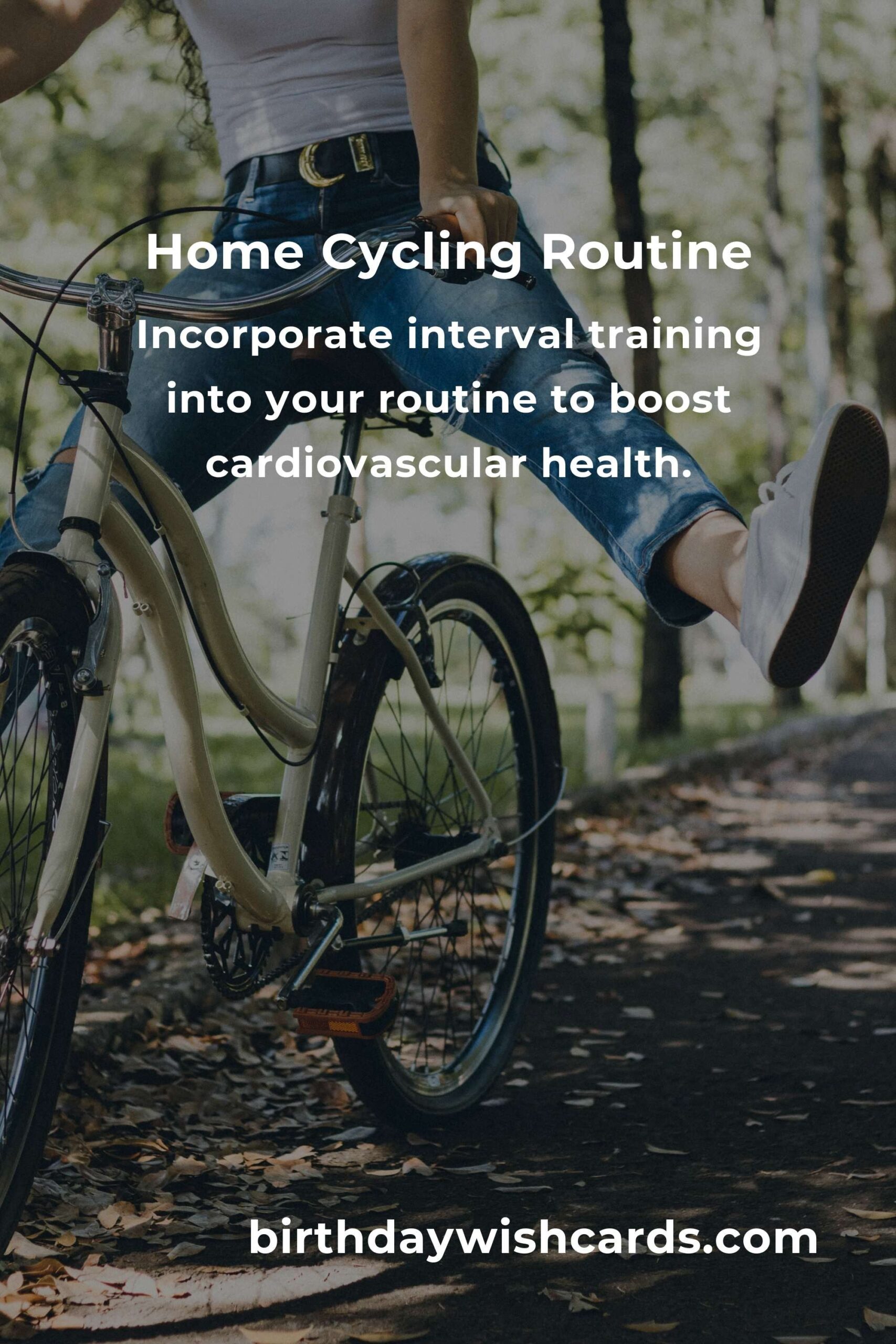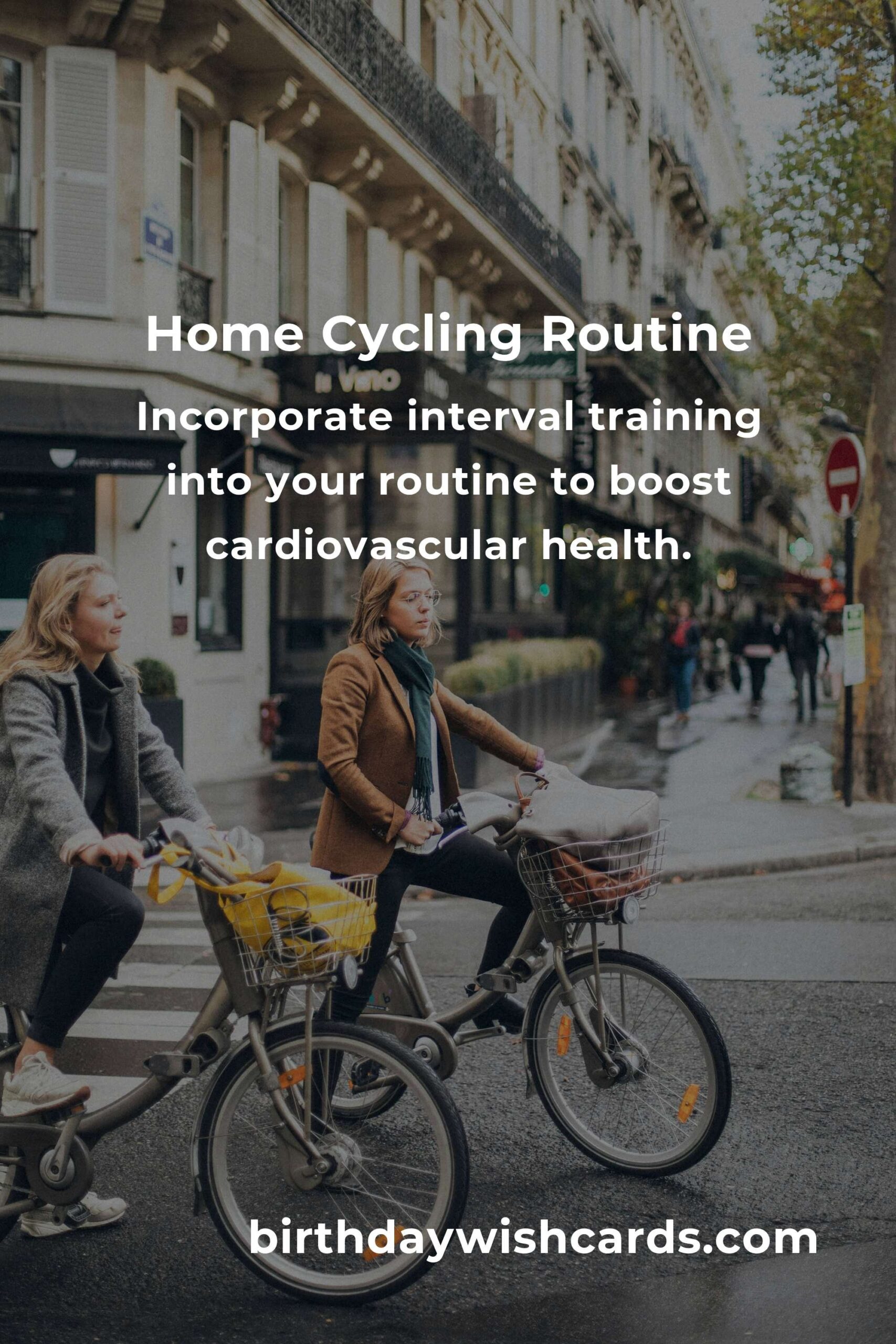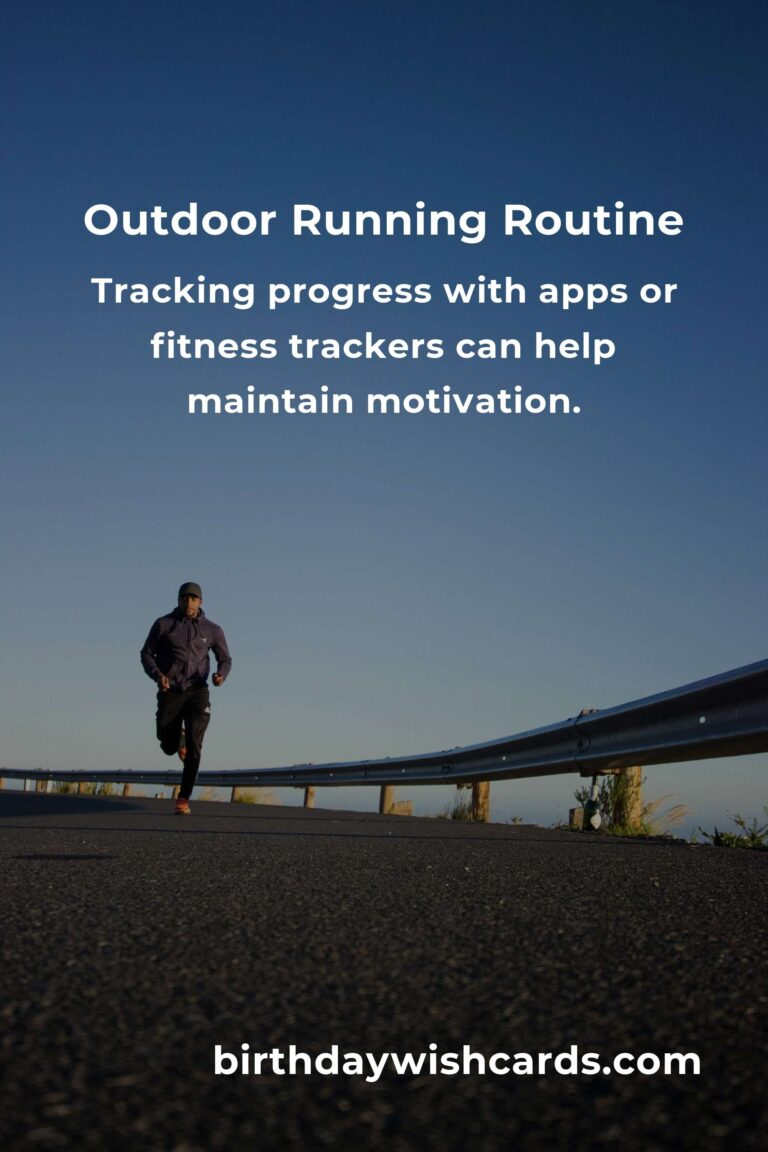Effective Home Cycling Routine for Young Adults
Staying fit and active is crucial, especially for young adults who are building the foundation for a healthy lifestyle. One of the most effective and accessible forms of exercise is cycling. Whether you’re using a stationary bike or a traditional bicycle, creating a home cycling routine can help you achieve your fitness goals.


Benefits of Home Cycling
Cycling at home offers numerous advantages that are particularly appealing to young adults. It is a low-impact exercise, making it easy on the joints while still providing an excellent cardiovascular workout. This makes it an ideal exercise for those who may be prone to injuries from high-impact activities like running.


Moreover, cycling helps in building muscle strength, improves joint mobility, and decreases stress levels. It’s also a fantastic way to burn calories and maintain a healthy weight. For young adults, developing a routine that includes cycling can lead to long-term health benefits.


Setting Up Your Home Cycling Station
Before you start your cycling routine, you need to set up a comfortable and effective space. If you are using a stationary bike, ensure it is placed on a stable surface. Adjust the seat and handlebar height to suit your body for optimal comfort and to prevent injuries.


For those with limited space, folding exercise bikes are a great option as they can be stored easily when not in use. Additionally, having a fan or an air-conditioning unit nearby can help keep you cool during intense sessions.


Creating a Cycling Routine
An effective cycling routine should start with a warm-up. Spend about 5-10 minutes pedaling at a low resistance to get your blood flowing and muscles warmed up. This step is crucial to prevent injuries and prepare your body for a more intense workout.
After warming up, increase the resistance and pedal at a moderate pace for about 20-30 minutes. This part of the workout should be challenging but sustainable. You should be able to hold a conversation, but your heart rate should be elevated.
To increase the intensity, incorporate interval training into your routine. Alternate between one minute of high resistance, fast-paced pedaling, and two minutes of lower resistance, slower-paced pedaling. This method not only boosts cardiovascular health but also improves endurance and burns more calories.
Cooling Down and Stretching
After the main workout, spend another 5-10 minutes pedaling at a low resistance to cool down. Cooling down helps your heart rate return to normal and reduces muscle stiffness.
Finish your routine with stretches targeting your legs, hips, and lower back. Stretching post-workout aids in flexibility and minimizes the risk of injury.
Tracking Your Progress
For motivation and to track your improvements, keep a cycling journal. Record your workout duration, resistance levels, and how you felt during and after each session. Set achievable goals, such as increasing your cycling time or resistance over weeks or months.
Using fitness apps or wearable technology can also provide insights into your progress and help you stay committed to your routine.
Conclusion
Incorporating a home cycling routine into your lifestyle can be both rewarding and enjoyable. It provides a convenient way to stay fit and healthy without the need for a gym membership. By following the outlined steps and remaining consistent, young adults can reap the numerous health benefits that cycling offers.
Cycling at home is a low-impact exercise, providing an excellent cardiovascular workout.
Setting up a comfortable and effective cycling station at home is essential.
An effective cycling routine should start with a warm-up to prevent injuries.
Incorporate interval training into your routine to boost cardiovascular health.
Finish your workout with stretching to aid in flexibility and minimize injury risk.
#HomeCycling #FitnessRoutine #YoungAdults #ExerciseAtHome #CyclingBenefits



